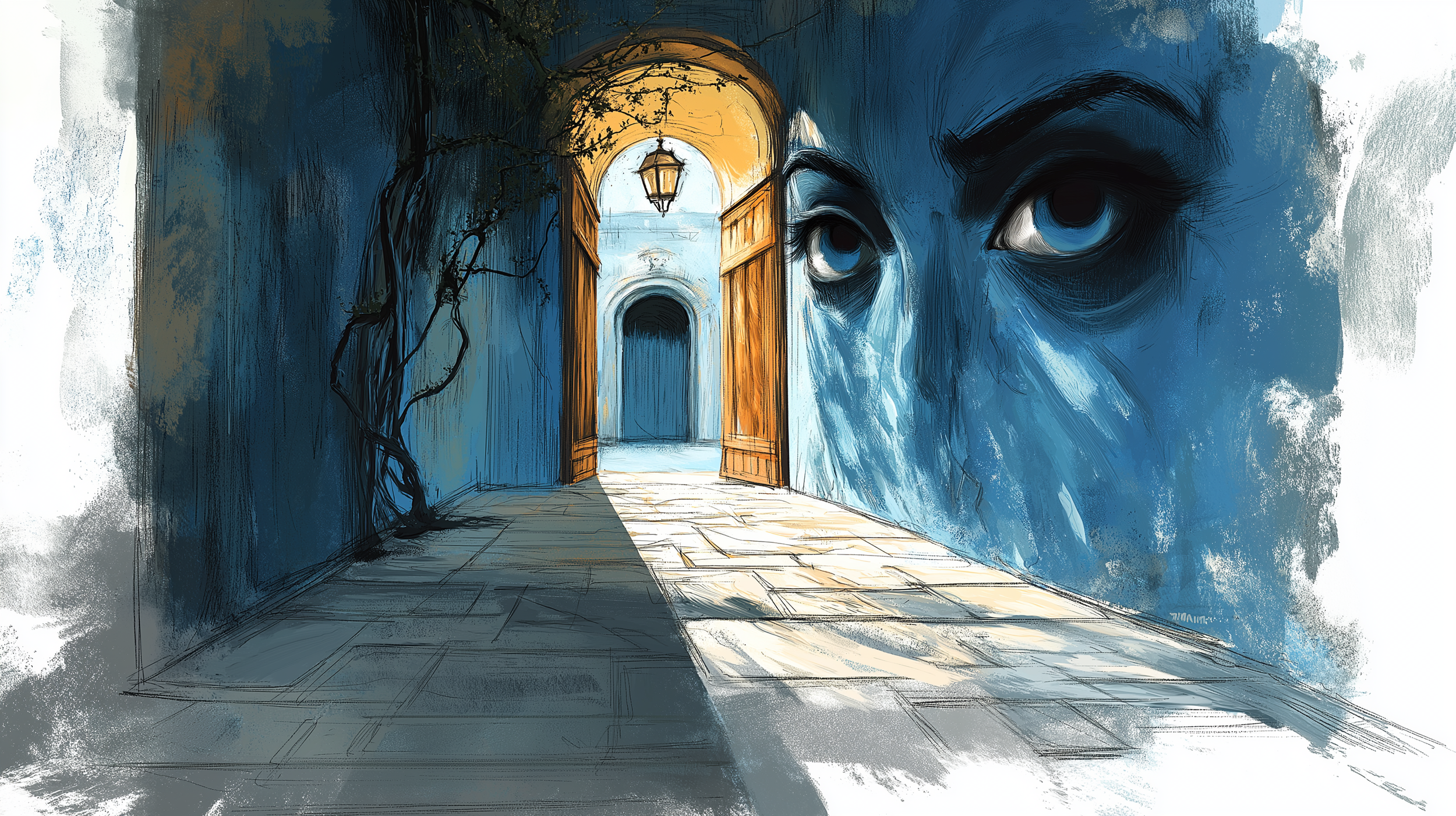
Taste, Trust, and the Trouble with AI: Why Designers Have A Growing Responsibility
Discover how great design should feel human using AI and the importance of using AI as a design professional, designing with intent rather than someone non-creative who just generates. Design professionals have a growing responsibility and an invitation to help shape the future of AI-driven design creation.

Why AI is Reshaping How Designers Win Client Buy-In
Discover how designers use AI to fast-track client understanding and visualize ideas clearly, helping clients invest in creative vision faster and with more confidence.

Why Learning AI Starts with Curiosity
Many designers approach AI with hesitation, expecting instant results and giving up when it doesn’t deliver on the first try. But true creative growth starts with curiosity, not perfection. This article explores why embracing the discomfort of not knowing is essential for developing meaningful, AI-supported design workflows. It’s a call to shift from quick-fix thinking to open-minded exploration and to see curiosity as a serious creative skill.

Why I visualize in Unreal Engine
In a design landscape shaped by rising client expectations and cinematic storytelling, conventional modeling software no longer cuts it. This article explores why I’ve moved my entire spatial design workflow into Unreal Engine 5 and why I believe real-time visualization is the future of experience design. It’s not just about speed, it’s about creative independence. If you’re still relying on static renders to communicate emotional, complex spaces, this is your call to rethink your software palette and reclaim control over how your design vision is delivered.

Why Designers Still Hold the Power when using AI
In a world increasingly shaped by AI, it's easy to assume that creative professionals are being replaced. But in reality, designers hold more power than ever, if they know how to use it. This article unpacks why human intuition, emotional intelligence, and creative vision remain irreplaceable in design workflows, and how pairing those strengths with AI processes can elevate, not diminish, our creative authority. It’s a reminder that technology doesn’t define our value, but our thinking and creative application of it does.

Is AI your sparring partner or your ghostwriter?
This singular difference determines the value of your voice and the usefulness of your message. Today I want to talk about losing your voice to AI, which seems to be a trend I've been noticing. The ugly side-effect of lazy usage of AI is, that readers will stop reading your content as soon as they realize it was the artificial hand of your AI ghostwriter and not your own voice. So what can we do to personalize our AI collaboration in writing authentically?

The Echo of Connection and the Emotional Imprint of Community
Some experiences fade the moment they end. Others stay with us, looping in our minds, revisited in conversation, quietly reshaping how we feel about the world. Last week, I witnessed one of those rare experiences that left an emotional imprint far deeper than expected. It wasn’t the agenda or the venue, it was the people. The shared understanding. The moment where community didn’t just exist, it resonated. In this reflection, I explore the science behind why certain moments linger, why we feel transformed through belonging, and what this means for us as experience designers who are tasked with shaping not just space, but emotion, memory, and meaning.

The Architecture of Attention: Why Good Design Slows Us Down
What if the real strength of design isn’t in grabbing attention, but in helping us slow down and connect?
In this reflection, I explore how good design shapes our pace, our presence, and our memory. The best environments don’t just inform, they hold us. They create space to pause, reflect, and feel. Something that feels increasingly rare in today’s world. I also consider how the rise of AI and faster creative processes is pushing us to rediscover something slower and more human. Because maybe, designing for stillness is one of the most radical choices we can make as creatives today.

Designing for Emotion: What Makes an Experience Truly Memorable?
We remember the things that move us. In this article, I explore how memory and emotion are deeply connected in exhibition design, and why emotional resonance often outlasts even the most complex installations. Drawing on insights from neuroscience, landmark installations, and the power of visual storytelling from platforms like National Geographic, we look at how to design experiences that people don’t just attend, but carry with them long after they leave.

Why the Tasks You Avoid Might Be the Ones That Make You a Better Designer
There is a quiet tension in every creative profession between the work we love and the work we tend to avoid. Often, it is not the complexity of the task that creates resistance, but the accumulation of small, tedious steps that feel far removed from the spark of creativity that drew us to design in the first place. Yet these overlooked parts of our process hold hidden potential. In this article, I explore how embracing the tasks we dislike can sharpen our creative thinking, improve our workflows, and even deepen our professional resilience. Backed by research and real-world examples, I also reflect on how carefully chosen AI tools can ease this journey, helping us stay focused on what matters most: our craft.

Why Foreshadowing Knowledge is the Most Underrated Creative Skill in 2025
Creative success in 2025 won’t come from mastering every tool, but from knowing what’s possible before you need it. In this article, I explore why the ability to foreshadow knowledge is becoming the most underrated creative skill, especially in an AI-saturated world. Learn how designers can manage information overload, avoid shiny object syndrome, and build a flexible, future-proof workflow—without losing creative depth.

Designing Smarter: What Wearing 10 Creative Hats Really Means
How today’s exhibition and experience designers blend traditional design expertise with AI-assisted processes to navigate complex projects, wear multiple hats, and stay creatively in control.

Designing for Impact: Why Memory Is the True Currency of Experience Design
The Battle for Attention in an Oversaturated World: In today’s world, people are bombarded with thousands of messages daily. Every brand, exhibition, and event competes for a fleeting moment of attention. But the real question isn’t just, “Will they notice us?”. It’s “Will they care enough to give us their time?”

The Rule of 100: Life-Long Learning
A creative director once challenged me to visit 100 exhibitions—a goal that seemed impossible at first. But I soon realized the number wasn’t the point; it was the mindset shift that changed everything. The Rule of 100 pushes us to aim higher, see more opportunities, and accelerate our learning curve. How could you apply it to your own ambitions?

Visualizing Content through VFX with AI
A visual study of implosion versus explosion scenes for VFX.

How AI is Empowering Small Businesses and Solopreneurs
AI is empowering small businesses and solopreneurs by reducing costs, keeping creative control in-house, and making ambitious ideas more accessible. This post explores how AI-driven tools give smaller teams a competitive edge and unlock new creative possibilities.

Defining Design in the Age of AI
It’s about achieving balance and vision with the physical and mental skills we have paired with the innovative tools available.

Can We Have Spatial Awareness with AI?
Using spatial awareness to define our surroundings.

My Journey: Bridging Creativity and AI
As someone deeply passionate about Exhibition & Experience Design and the art of transforming visitors through stories that move us, I’m always exploring new emerging technologies that have the potential to reshape creativity.
